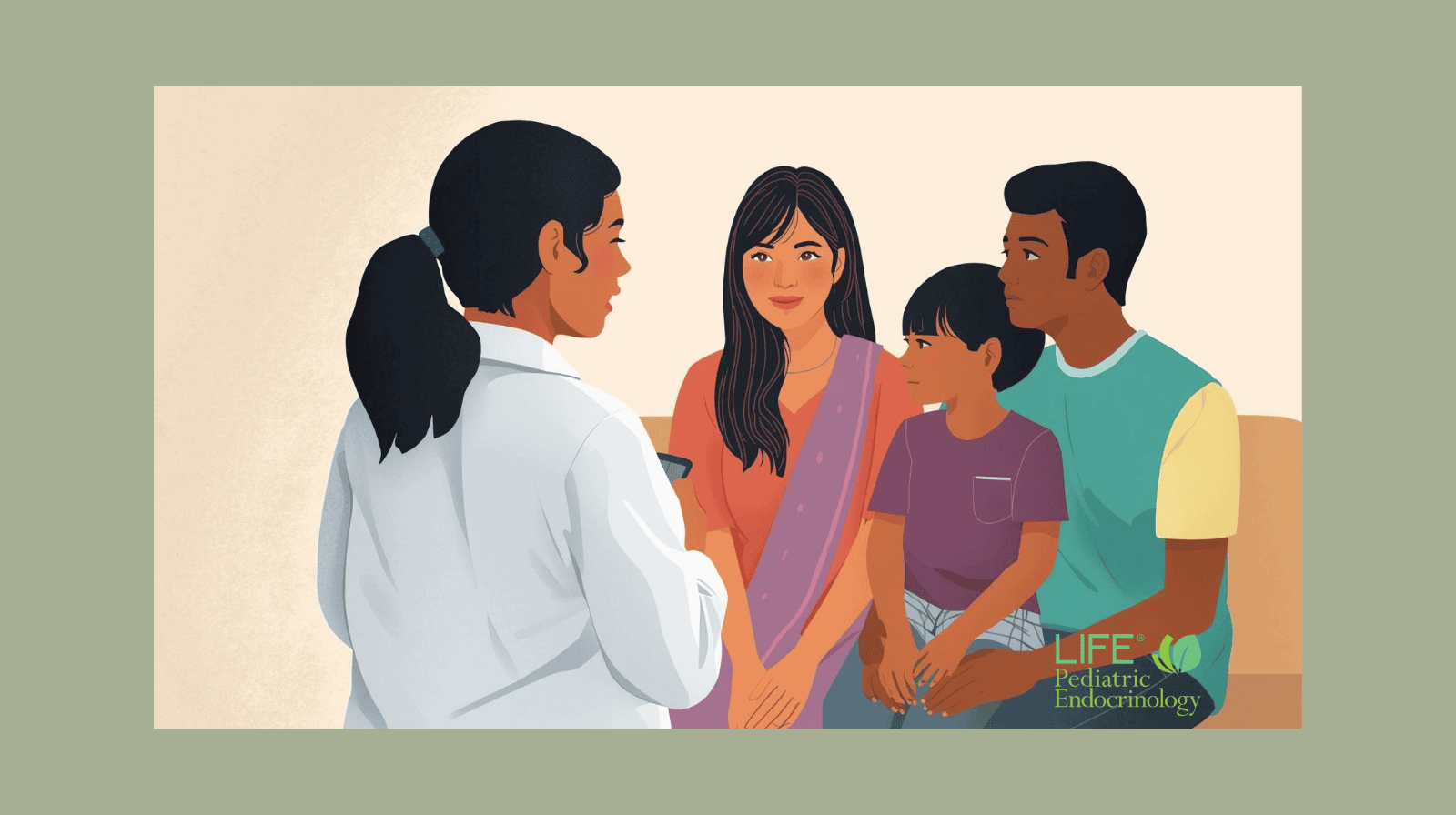What Is Bone Age? How X-Rays Reveal Your Child’s Growth Timeline
Understanding Your Child’s Internal Growth Clock: What Is Bone Age?
Bone age is a measure of skeletal maturity — a biological clock that shows how far a child’s bones have developed compared to their age.
At Life Pediatric Endocrinology, we use bone age X-rays to help families understand how much growing time remains, whether puberty is early or delayed, and how to plan care around it.
How It Works
A bone age X-ray focuses on the hand and wrist. As children grow, the bones gradually lengthen and their growth plates (epiphyses) fuse — the process known as endochondral ossification.
This imaging allows doctors to determine whether your child’s bones are:
-
Younger than average (delayed) — suggesting more growth time left
-
Older than average (advanced) — meaning growth may finish sooner
-
Perfectly matched to age — indicating steady, typical development
Why Bone Age Is More Reliable Than Chronological Age
Chronological age tells us how many birthdays a child has celebrated. Bone age tells us how mature their body truly is.
Two 12-year-olds might be the same age on paper, but one may have the bone maturity of a 10-year-old while the other’s skeleton behaves like a 14-year-old’s. Those differences are critical when predicting height or timing puberty.
Hormones and Bone Growth
Growth hormone, thyroid hormone, and sex steroids (estrogen and testosterone) orchestrate bone development. Estrogen, in particular, controls the fusion of growth plates — the process that eventually stops height gain.
When puberty starts early, growth plates close sooner. When it’s delayed, growth plates stay open longer, leaving more time to grow.
How Environment Influences Bone Maturity
Nutrition, exercise, sleep, and overall health can all impact bone age. Children who are undernourished or chronically ill may have delayed bone age; those with obesity or early hormone activation often have advanced bone age.
At Life Pediatric Endocrinology, we help families identify and minimize environmental factors that interfere with healthy hormonal balance. One common example involves household products containing lavender or tea tree oil.
Emerging research has shown that certain plant-based essential oils can bind to estrogen receptors, potentially acting like weak hormones in the body. While these effects are subtle, our clinicians take them seriously — especially in children with early puberty or hormonal sensitivity.
“We’ve seen noticeable improvements when families remove lavender and tea tree oil products, along with other products, from their homes,” says Dr. Kelli Davis, Pediatric Endocrinologist at LIFE. “It’s a small, simple change that helps create a more balanced hormonal environment — and parents appreciate having something actionable they can do right away.”
Families working with LIFE receive a curated checklist of personal care and household products to review — from shampoos and lotions to air fresheners — helping reduce unnecessary hormone exposure during critical growth years.
For families who want to learn more about this important topic, you can read our full article on lavender and tea tree oil and their hormonal effects on children.
At LIFE, we look at the whole picture — not just the X-ray — to understand what your child’s body is communicating.
FAQ: Families Often Ask…
1. What does a bone age X-ray actually show?
It reveals how mature your child’s bones are compared to their age. By studying the growth plates in the hand and wrist, doctors can estimate how much growing time is left.
2. Does bone age predict adult height?
It can give a strong estimate, especially when paired with growth patterns, labs and family height.
3. Can bone age be changed?
Yes. Treating underlying hormonal or nutritional issues can normalize bone maturation.
4. What happens if bone age is advanced?
We may consider treatment to slow bone aging and preserve growth potential. You can read more about Life Pediatric Endocrinology's integrative approach to keeping growth plates open here.
Schedule a Growth & Puberty Evaluation
If your child’s bone age doesn’t match their chronological age, schedule a Growth and Puberty Evaluation with Life Pediatric Endocrinology.
Our team will interpret the X-ray, assess hormone function, and create a personalized plan for healthy growth.
Schedule your consultation today to understand your child’s growth timeline.
About Dr. Kelli Davis
Dr. Davis is a pediatric endocrinologist known for her expertise in bone density, growth disorders, and hormone-driven development.
Learn lifestyle strategies that support natural growth:
Sleep, Nutrition, and Vitamin D: The Hidden Keys to Healthy Growth
Disclaimer
This content is educational and not a substitute for professional medical advice.
Share this
You May Also Like
These Related Stories

Why Isn’t My Child Growing? Real Causes and Expert Answers

When to Worry About Your Child’s Growth: Early Puberty & Late Bloomers


